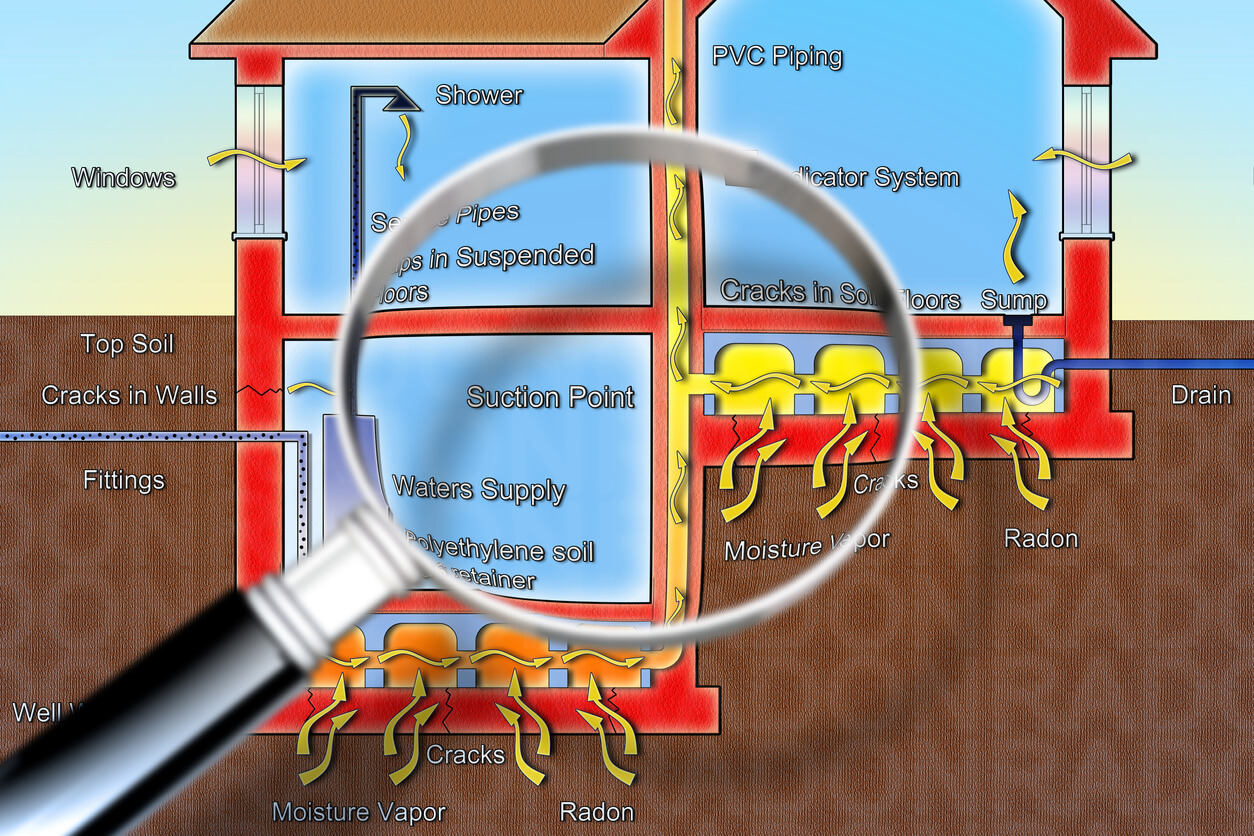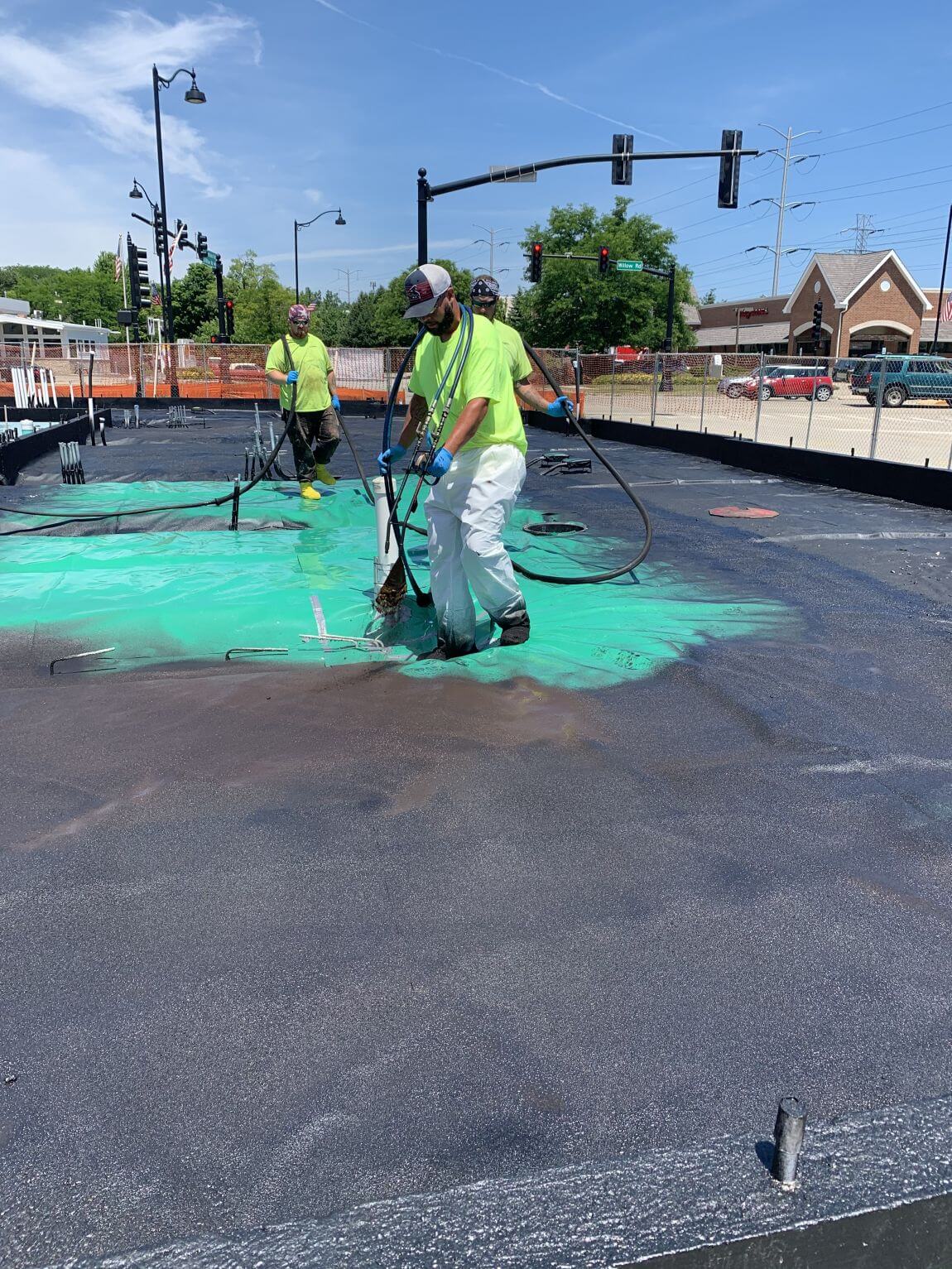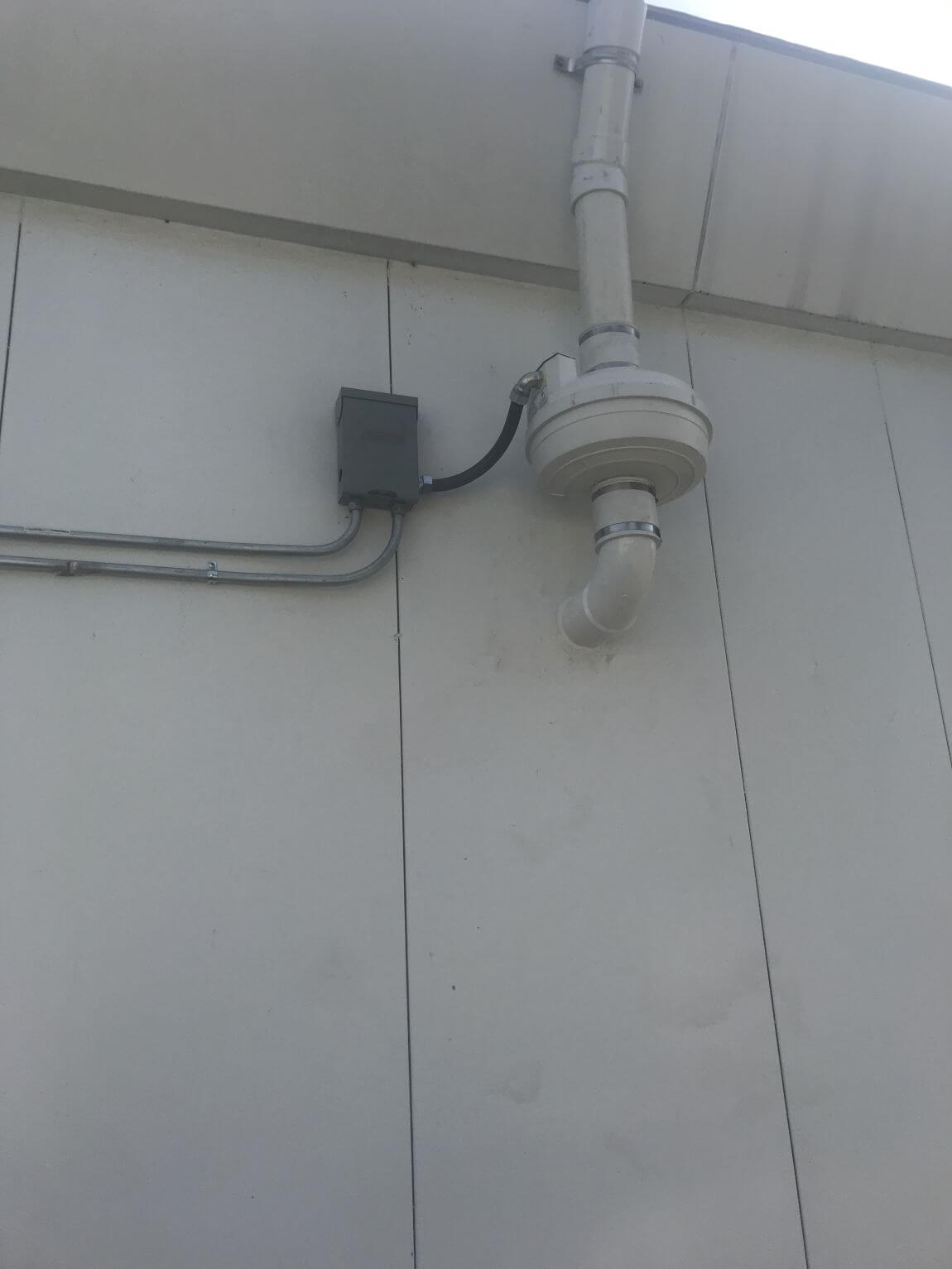You may or may not have heard of vapor intrusion, but it is a serious issue that can negatively impact your home. Fortunately, there are various methods of effective vapor intrusion mitigation.
What is Vapor Intrusion?
Chemical vapors from contaminated or polluted soil, groundwater, and sewer lines can migrate into nearby buildings through openings in the structural foundation. This is referred to as vapor intrusion and occurs due to cracks or seams in concrete foundations, slabs, and sumps. Since concrete is a naturally porous material, vapor can move directly through it, even without visible openings.

Dangers of Vapor Intrusion
Once inside the building, the vapor can be inhaled, posing immediate or long-term, chronic health issues. This can be dangerous for anyone, but is particularly true for small children, the elderly, and anyone with breathing difficulties. Additionally, in rare cases, the buildup of vapors from volatile organic compounds, like gasoline or methane, can create explosive conditions.
Vapor Mitigation Technology
Before moving forward with mitigation, vapor intrusion testing is often recommended. Once testing is complete, there are several factors involved in determining which method should be used in a specific situation. All methods can successfully decrease or eliminate the infiltrated vapor. If contamination cannot be eradicated immediately, building-specific methods can reduce exposure and related health risks.
Vapor mitigation methods are classified as being either passive or active, depending on how they work. Passive mitigation methods prevent the entry of vapor into the structure, and are most easily utilized during new building construction.
Passive mitigation methods can later be converted into active systems, if necessary. Active mitigation methods are used primarily for existing structures, and act to change the pressure difference between the sub-slab foundation and the building’s interior.
Passive Vapor Intrusion Mitigation
Sealants
Placing sealant in the cracks or seams of the slab, basement walls, openings around pipes and water lines, and pouring concrete over unfinished floors works to prevent vapor from rising.
Vapor Intrusion Barrier Systems
Geomembrane installation involves an impermeable layer of thick plastic sheeting being laid prior to the concrete slab being poured. This is typically done during the construction phase, but can also be done on top of existing concrete.

Here at Cabeno Environmental Field Services, one method we use is a product called LIQUID BOOT®. It’s a spray-applied rubberized asphalt that becomes a seamless, impenetrable barrier. It works successfully to prevent intrusion of all the following subsurface chemicals:
- Hydrogen sulfide
- Mercury
- Methane
- Radon
- Semi-volatile organic compounds
- Volatile organic compounds (VOCs)
Passive Venting Systems
A venting layer with a vapor barrier can be installed beneath a structure’s slab or flooring. The ventilation material is connected to vertical PVC, which then directs the vapor up to the roof line. The vapor is released out into the open air and away from the building. This method of vapors being drawn out from under the building and up to fresh air is called the “stack effect.”
Active Vapor Intrusion Mitigation
Sub-Slab Depressurization
Sub-slab depressurization involves using a fan and a small suction pit created in the concrete. This method works to pull the vapors from under the slab to the suction point, then conducts those vapors through a PVC piping to the exterior roof line. Here the vapors are expelled before they have a chance to enter the ventilation system.
Sub-Membrane Depressurization
In this case a thick membrane is installed over an unfinished floor. A fan is then connected to a small opening in the membrane. Suction is created, similarly to sub-slab depressurization, and carried through PVC piping the exterior roof line, and out of the building.
Vapor Mitigation System Installation & Usage
Not only are vapor intrusion mitigation systems an excellent way to improve indoor air quality, but they are also very safe to use. Mitigation systems have been installed and used in thousands of homes, schools, offices, and other public buildings.
Mitigation System Installation
Mitigation system installations in homes typically take a day or two to complete. The majority of the system will be installed in the basement or crawl space, however some PVC piping may need to be installed in closets or low-traffic areas.
In the main living areas, carpet may need to be pulled back to find and seal cracks, but we do our best to be minimally invasive. We take pride in respecting your home, privacy, and time, as we work to ensure your safety.
Vapor intrusion mediation utilizes very little energy – less than a television – but you may notice a slight increase in your electric bill. It’s a small price to pay for good health, and is an investment in your home.

Vapor Intrusion Mitigation System Usage
Until the vapor is eliminated, we will monitor both the system and the mitigation progress. We will perform periodic system inspections to ensure proper efficiency and good working order. We will also periodically check for new cracks, and remedy them as necessary.
Broken or problematic fans and piping will need to be reported immediately for repair or replacement. Once the system is set up and running, the EPA requires that you do not shut it off until they specify it is safe to do so.
Why Choose Cabeno
If your home, business, or construction project has been deemed contaminated by vapor intrusion, Cabeno Environmental Field Services is here to help. We are licensed by, and work closely with OSHA, as well as several state councils, and other organizations.
As a premiere environmental field service company in the midwest, we are proud to provide our clients with the results they need, using the latest in cutting edge technology. Our comprehensive environmental services and products allow us to address any environmental concern that may arise.
Our team is dedicated to protecting your projects, buildings, and homes; and we are passionate about keeping people safe. We encourage anyone in need of environmental services to contact us directly for a consultation. Our multi-state certifications allow us to go where we are needed, so reach out today and find out how Cabeno Environmental Field Services can help you.


